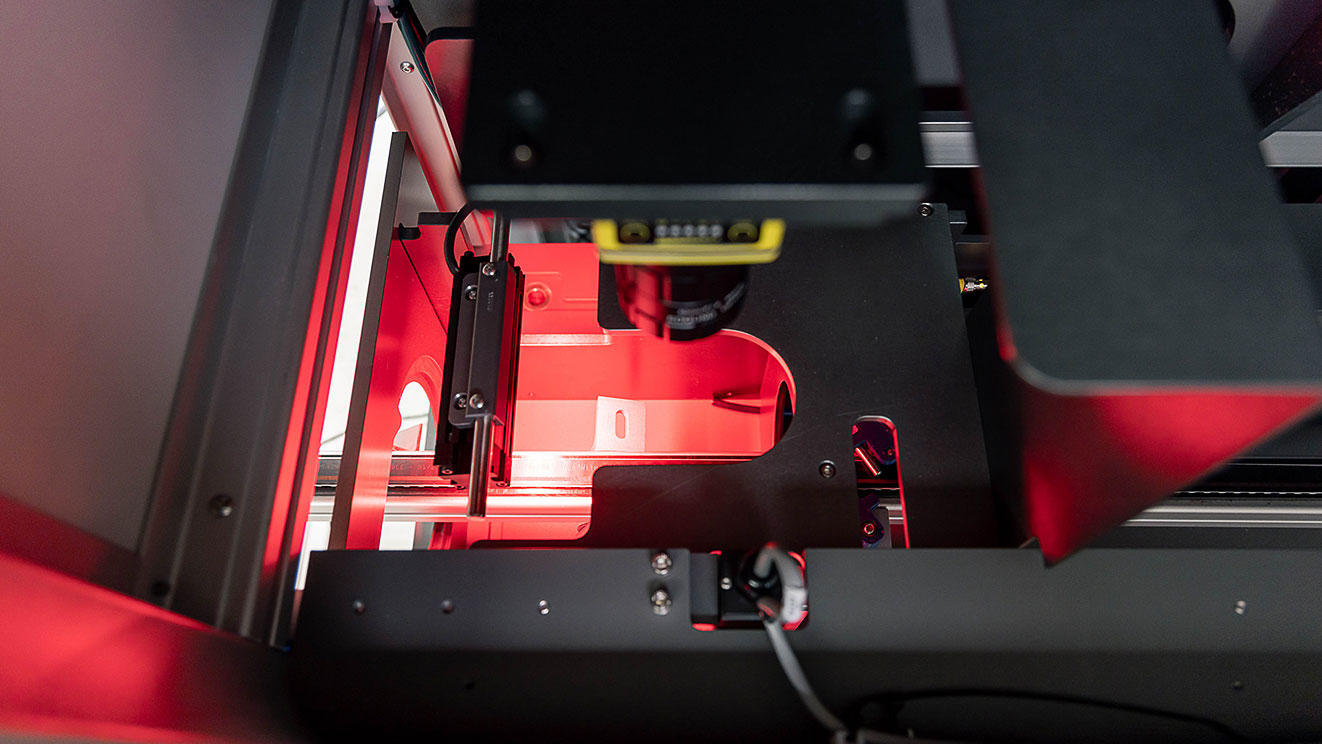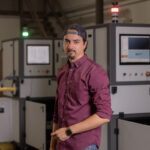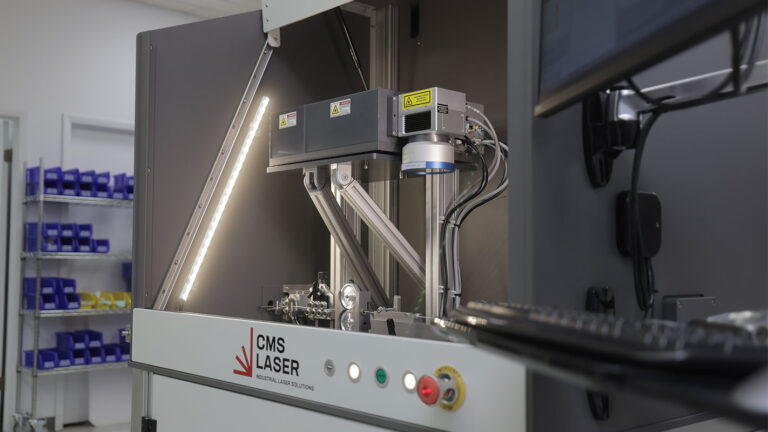At CMS Laser, we develop a wide array of laser-based solutions to successfully meet our client’s manufacturing needs and production goals. One of our most efficient solutions is the on-the-fly laser system.
Many of our clients require a high-speed laser solution compatible with other production elements in a constant processing flow – and that’s where on-the-fly (OTF) processing is an excellent option. OTF are used across many industries, including pharmaceutical and wire marking, and is used in laser marking, drilling, cutting and welding applications.
We’ve outlined six advantages of on-the-fly laser production to help you understand the technology better and if it’s the right solution for your requirements:
1. Integrated into the Manufacturing Line
Nearly all the systems we design and build incorporate elements of automation, but on-the-fly takes it one step further. It removes the loading and unloading time from the process by integrating the laser’s function at speed, within the manufacturing line.
Our on-the-fly laser systems have custom software that allows for flexibility and versatility; there’s no need to stop production to change or modify parts. Vision systems work in coordination with the software to ensure accurate laser results. The ultimate benefit of this seamless integration is exceptional throughput and increased efficiency.
Take a look at the following video to see how we integrated laser marking into a conveyor system. Using on-the-fly technology, the laser is able to mark the product at high speed allowing for optimal production and flexibility.
You can learn more about the benefits of working with a laser systems integrator in our blog post The 6 Key Differences of a Laser Integrator vs Laser Manufacturer.
2. High Speed Capability
As manufacturers look for faster, more efficient means of production, speed is high on the list of priorities. The speed at which a laser can operate depends on the application, and often the other automated elements around the laser, but we’ve recently developed a system for an extrusion line that operated at 1,000 feet per minute.
In pharmaceutical applications, speed is an essential requirement. Watch this video to see the custom dual bowl-fed laser tablet driller we developed for the pharmaceutical industry.
It features two CO2 lasers that use a trepanning process to expand the initial hole to the required size and two vision systems to ensure each tablet meets necessary specifications. The on-the-fly laser technology enables our client to accurately drill up to 140,000 tablets an hour (nearly 39 pharmaceutical tablets per second).
3. Reliability
Since on-the-fly lasers are integrated into a greater manufacturing line, it’s essential for the laser to be robust and reliable. Our Application Development Lab has done extensive testing on nearly all laser architectures available on the market and long-term prototype testing to determine the best laser match for an application.
4. No-Contact Process
Unlike other mechanical processing options, such as mechanical drills or punches, using lasers is a no-contact process that applies no pressure to the product. No-contact processes reduces the risk of damage and improves overall quality of the final product. With mechanical options for cutting, tools can clog or dull over time. With laser cutting that’s not an issue.
5. Durable Results
This advantage is specific to laser marking. In many applications, for example, laser marking of PVC gas lines, marks need to last for years, if not decades. Other means of marking, inks, dyes, or engraving, can wear off over time. On-the-fly laser marking quickly and efficiently leaves a clear contrast on the product that will last as long as the life of the product.
Check out this video which features an on-the-fly laser wire marking system. Not only is this system designed to mark 800 feet per minute, it also places permanent marks on the wire with no contact, inks or other consumables.
To get a clear view of the laser wire marking, skip to 1 minute where the marking process is shown at a slower speed.
6. Environmentally Friendly
Lasers are a greener alternative to other mechanical processes as they require no consumables to perform their designated function and there’s nothing to dispose of at the end of the process. Integrating on-the-fly laser processing optimizes efficiencies, increases throughput and can lower the overall manufacturing cost.
Final Thoughts
While the advantages we’ve outlined above apply across multiple applications of on-the-fly laser processing, the most important advantages are the ones they could bring to your specific application and manufacturing challenges. The potential benefits range from increased throughput to improved accuracy to a seamless manufacturing line.
We have extensive experience with on-the-fly laser processing and work with each client to understand their specific requirements and needs before developing a custom solution.
Still have questions regarding on-the-fly laser processing systems? Contact us today to discuss your various needs and specifications. Also, read our post on The 6 Must Ask Questions Before Purchasing an Industrial Laser for more information about the industrial laser system buying process.








0 comments
Leave a comment.